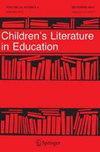婴儿生存包:芬兰孕妇包中的婴儿盒书籍和婴儿时间性
IF 0.6
4区 文学
0 LITERATURE
引用次数: 0
摘要
1938年,芬兰政府为应对不断下降的出生率和婴儿死亡率而推出了产妇一揽子计划,自1949年以来,该计划已惠及所有新生儿,无论其收入或社会地位如何。这个盒子在国际上是一种独特的现象,也是芬兰童年历史的重要组成部分,因为它的内容反映了当时人们对童年的看法。1982年,一个婴儿书被添加到盒子里。然而,研究一直专注于盒子的社会方面,而忽略了婴儿书籍。在这篇文章中,我们通过研究它们如何描述时间规范性来弥补对婴儿箱书籍缺乏学术兴趣。借鉴酷儿时间研究(Halberstam 2005;Freeman 2010),我们引入术语婴儿时间性/婴儿时间来讨论美学和规范时间线的相互作用。我们声称这些书使用身体的节奏,节奏,运动,以及感官和触觉方面来描绘非规范的时间线,被理解为婴儿的时间性。根据Hartmut Rosa(2019)的研究,我们认为这些书所鼓励的成人照顾者和婴儿之间的相互作用旨在达到共鸣,被理解为存在和联系。与成人的加速相反,我们声称这些书,作为其独特的混合美学的一部分,将婴儿的时间性呈现为减速。每年都有大量的芬兰家庭参与,婴儿箱书籍提供了强有力的时间话语,同时促进了生育时间的共鸣。然而,我们发现,虽然所研究的书籍偏离了成人的时间规范性,但婴儿的时间性仍然包括在芬兰国家批准的规范性生殖时间表中。因此,婴儿箱书揭示了我们这个时代的时间复杂性。本文章由计算机程序翻译,如有差异,请以英文原文为准。
Survival Kits for Babies: Baby Box Books and Infant Temporality in Finnish Maternity Packages
Abstract Maternity packages, introduced in 1938 by the Finnish state to counteract declining birth rates and infant mortality, have reached all newborns regardless of income or social status from 1949 onwards. The box is a unique phenomenon internationally and a significant part of the Finnish history of childhood as its contents mirror contemporaneous views on childhood. In 1982, a baby book was added to the box. Research has, however, kept focusing on the social aspects of the box, ignoring the baby books. In this article, we make up for the lack of scholarly interest in the baby box books by studying how they depict temporal normativity. Drawing on queer temporal studies (Halberstam 2005; Freeman 2010), we introduce the terms infant temporality/ baby time to discuss the interplay of aesthetics and normative timelines. We claim that these books use bodily tempo, rhythm, movement, as well as sensory and tactile aspects to depict non-normative timelines, understood as infant temporality. Drawing on Hartmut Rosa (2019), we argue that the interplay between adult caregiver and infant encouraged by these books aims to achieve resonance , understood as presence and connection. In contrast to adult acceleration , we claim that these books, as part of their unique hybrid aesthetics, present infant temporality as deceleration . Reaching a vast number of Finnish families yearly, the baby box books provide a strong temporal discourse while promoting a resonant reproductive time. However, we find that while the books studied deviate from adult temporal normativity, infant temporality is still included in a normative reproductive timeline, sanctioned by the Finnish state. Hereby, the baby box books expose temporal complexities of our era.
求助全文
通过发布文献求助,成功后即可免费获取论文全文。
去求助
来源期刊

CHILDRENS LITERATURE IN EDUCATION
LITERATURE-
CiteScore
1.40
自引率
25.00%
发文量
38
期刊介绍:
Children''s Literature in Education has been a key source of articles on all aspects of children''s literature for more than 50 years, featuring important interviews with writers and artists. It covers classic and contemporary material, the highbrow and the popular, and ranges across works for very young children through to young adults. It features analysis of fiction, poetry, drama and non-fictional material, plus studies in other media such as film, TV, computer games, online works; visual narratives from picture books and comics to graphic novels; textual analysis and interpretation from differing theoretical perspectives; historical approaches to the area; reader-response work with children; ideas for teaching children''s literature; adaptation, translation and publishing.
CLE is a peer-reviewed journal covering children''s literature worldwide, suitable for professionals in the field (academics, librarians, teachers) and any other interested adults.
- Features stimulating articles and interviews on noted children''s authors
- Presents incisive critiques of classic and contemporary writing for young readers
- Contains articles on fiction, non-fiction, poetry, picture books and multimedia texts
- Describes and assesses developments in literary pedagogy
- Welcomes ideas for ‘special issues’ on particular themes or critical approaches
 求助内容:
求助内容: 应助结果提醒方式:
应助结果提醒方式:


